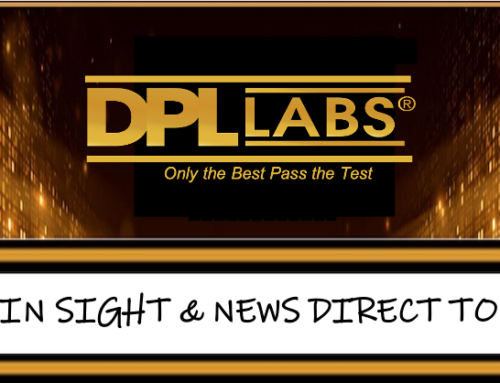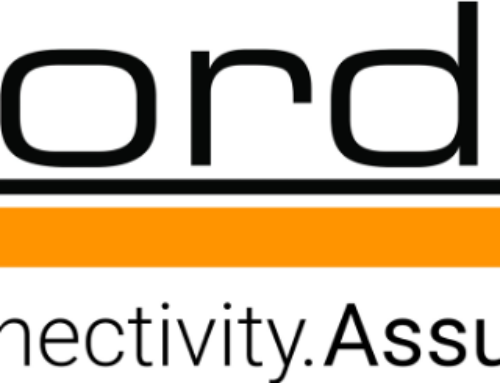The Trials and Tribulations Using AOC
Besides providing 48G test and certifications for high-speed video cables, DPL Labs® also investigates why high-speed video interface systems sometimes fail when put into service. This has become one of the most significant efforts to improve test procedures for best performance and reliability. By following up with problematic reports received from the field, DPL Labs® jumps into each case to determine where the problem is located, introduce various ways to alleviate the problem, establish a new test methodology capable of identifying the failure, and add that new procedure to DPL Labs® Argumentative Matrix Test Platform™. Over the years these case studies have established an abundance of new test policies that have reduced and, in some cases, eliminated the failure from surfacing again.
Over the last few months, DPL Labs® was part of a new case study involving several other high-quality manufacturers all having difficulties with AOC cable products. It was one of the most intense case studies ever taken on by DPL Labs®. The problem was multifaceted making it a systemic problem including just about all the products within the system environment with AOC cables being the worst offenders. After all the testing was compiled it came down to 4 major areas where these issues would surface.
DPL Labs® AOC Report Field Findings
Products experiencing these issues were shipped to DPL Labs® Head Quarters in Ormond Beach Florida. When delivered, all products were assembled according to all reported failed cases emulating the problems in the lab. They consisted of (18) different branded AOC cables, (1) 8K High Performance projector, (1) exceptional video processing system, (2) 8K Audio Video Receivers, (1) Apple TV, (1) 8K 1×3 switch, and 1 distribution device.
4 major areas were identified as toxic
1. Bandwidth
Three AOC cables had limited bandwidth. One that rolled off at 21Gbps with abnormally poor health including Rise and Fall times, failed Eye Diagrams, and a high level of jitter. Although these products were marked “8K” some did not have the necessary bandwidth required to achieve a true 8K 32G or 40G transmission. The worst was the AOC that topped out at 21Gbps. Two others successfully made it to 32Gbps passing some 8K content but were limited in color space, color depth, frame rate, and unable to support 40G. There was no indication that any of the three cables were tested and verified. With the emergence of more 8K content being available, the consumer base will begin to experience more system failures due to bandwidth limits. What this case study did in fact uncover is the importance of independent certification. If a cable is marked 8K it does not necessarily mean it supports all features defined as full 8K. There are most likely dozens of brand cables already in service marked as 8K but can only reliably operate at 4K 18G and maybe low level 8K 32G.
2. Bus Power Management
This turned out to be the most problematic with all the products. There was not one AOC that passed HDMI® DC current limits. This issue caused both the source and sink devices to produce changes with other DC requirements essential to support FRL and TMDS lanes for both input and output. Depending on the DC currents in both transmit and receive the numbers were all over the map. To verify this, we identified the issue on each sample, and by way of some custom DPL Labs® test fixtures, we were able to modify some values and able to restore the majority of the AOC’s for verification. Modules within each AOC have different electrical characteristics augmenting standard operating voltages required for both sink and source to function. Even when we emulated the correct voltage and currents on both input and output these sample cables still produced their own DC signature, most being incorrect. This was a viscous circle causing many products to have multiple types of failures. As an example, some products were intermittent while others did not operate at all, and still others with poor video.
3. Telemetry
This is nothing new. HDMI® incorporated Philips I2C serial communications for this channel. There are portions of the specification that were relaxed to be able to move this level of data over 1,2, and 3 meters of cable. This means cables, in most cases, are not able to go long distances with I2C. We did see some cables actually making it to 10 meters with some internal electronic correction. It should also be noted that the supply voltage of the cables’ I2C function is harvested from the main AOC supply which proved to already show deficiencies as noted above.
4. Feature Limitations
It was found that many of the sample products that were delivered had feature limitations with a few exceptions, i.e. could not support published claims. One device out of the lot was an 8K 1X3 switch. It performed extremely well except for its low but acceptable bus power that passed HDMI® minimums. As we began testing cables, we were only able to test 3 out of the 18 cables due to the device’s low bus power that in less than 10 minutes abruptly failed. It was determined that the excessively high operating currents of almost 200ma from the first 3 AOC’s caused the supply to fail. These current levels are far greater than what specification calls for at 50ma. This power consumption is dictated by each AOC module.
Is there a fix for all of this?
This is not our first Rodeo with all this. We have been testing and verifying HDMI® cables for better than 10 years and have discovered many challenges since HDMI®’s deployment. We have circumvented most of these by expanding our testing process over and above traditional test methods used for these products. This particular case study is just one more for the record books. Every time a case study is completed, additional testing procedures are designed and added to our DPL Labs® Argumentative Matrix Test Platform™. Every time DPL Labs® identifies a problem a new procedure is introduced to recognize a potential failure. Cables that come in for DPL Labs® Certification must pass all of these tests substantially reducing these threats before the cables are put into service. It is very effective and should be practiced by each cable brand that demands high-performance expectations. Now, with what we learned in this project; we discovered 9 more additional test procedures that will be added to the Argumentative Matrix Platform™. Keep an eye on DPL Labs® website for ongoing information.
“Only the Best Past the Test”



